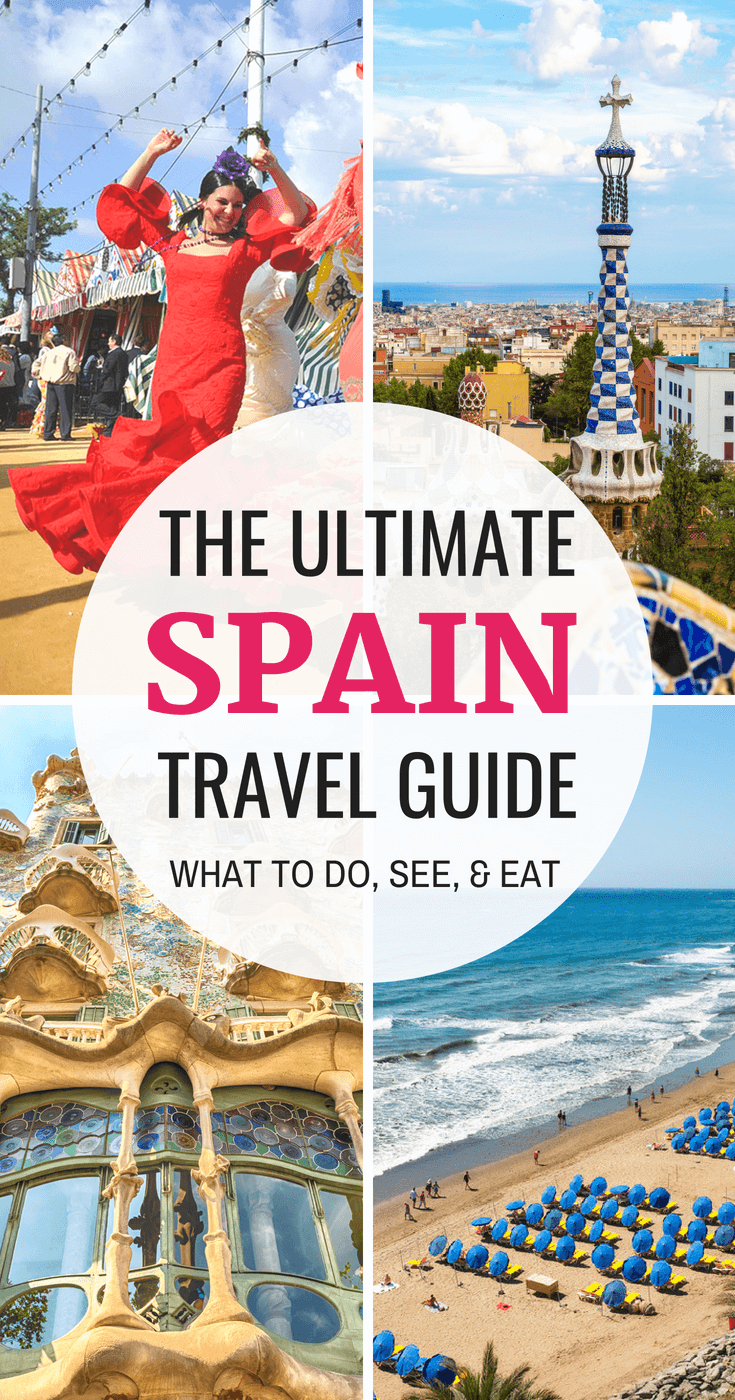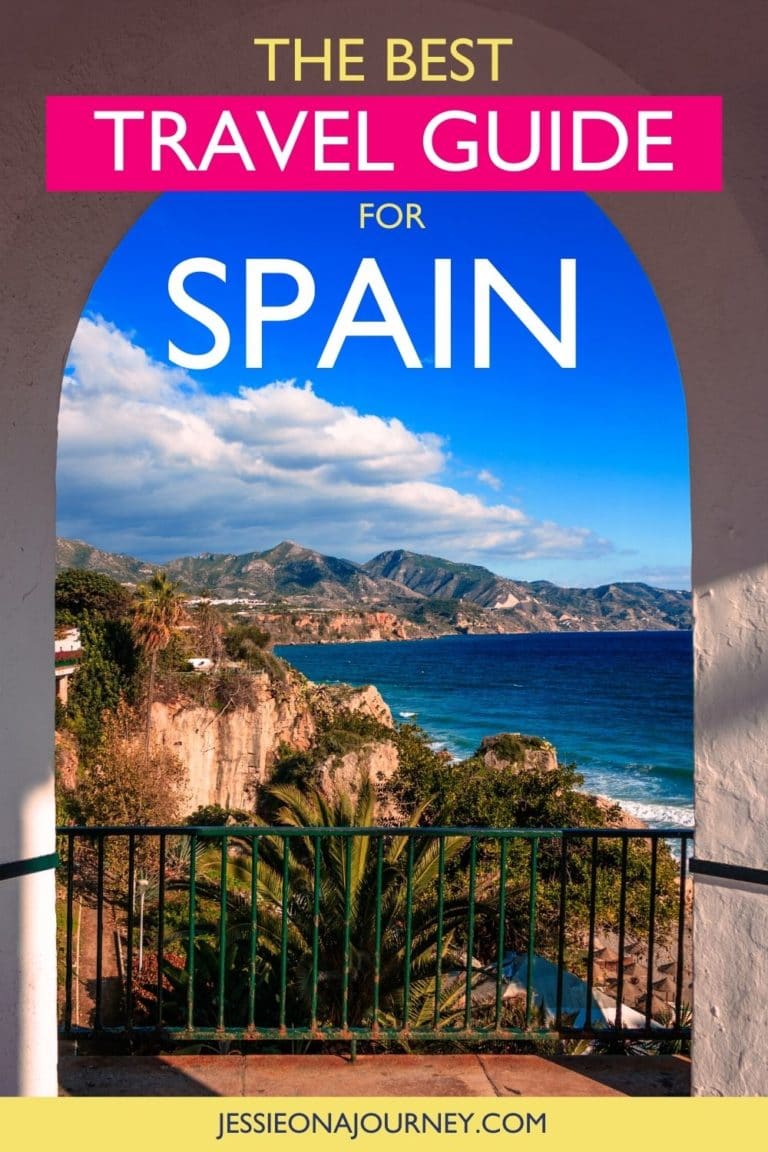
Spain. The very name conjures images of sun-drenched beaches, vibrant flamenco rhythms, ancient Moorish palaces, and the irresistible aroma of paella. This Iberian gem, steeped in a rich and complex history, offers a dazzling array of experiences for every traveler. From the architectural marvels of Gaudí in Barcelona to the fiery spirit of Andalusia, Spain is a destination that will capture your heart and leave you longing for more.
This comprehensive guide will equip you with everything you need to plan an unforgettable journey through this captivating country.
A Glimpse into Spain’s Storied Past: A Foundation for Discovery

Related Articles about España: A Tapestry of Sun, Sangria, and Centuries of Stories – Your Ultimate Travel Guide:
- The Pearl of the Orient Seas: A Comprehensive Travel Guide to the Philippines
- Argentina: A Tapestry of Wonders – Your Ultimate Travel Guide
- Chile: A Symphony of Extremes – Your Comprehensive Travel Guide
- Nepal: A Journey to the Roof of the World and Beyond
- Peru: A Tapestry of Ancient Wonders, Vibrant Cultures, and Breathtaking Landscapes
Spain’s history is a captivating saga of conquests, cultural fusions, and artistic renaissances. For millennia, it has been a crossroads of civilizations. Phoenicians, Greeks, and Romans left their indelible marks, evident in ancient ruins and infrastructure. The Visigoths followed, and then came the transformative Moorish conquest in the 8th century. For nearly 800 years, Islamic rule flourished in the south, leaving behind breathtaking architectural wonders like the Alhambra in Granada and the Mezquita in Cordoba, a testament to sophisticated artistry and intellectual prowess.
The Reconquista, a centuries-long process by Christian kingdoms to reclaim the peninsula, culminated in 1492 with the fall of Granada and the unification of Spain under Ferdinand and Isabella. This era also marked the voyages of Columbus, ushering in the Spanish Golden Age and an empire that stretched across the globe. The subsequent centuries saw periods of immense power and artistic brilliance, with masters like Cervantes, Velázquez, and Goya shaping Western culture.
The 20th century brought upheaval with a brutal civil war, followed by decades of dictatorship under Franco. Spain’s transition to democracy in the late 1970s marked a new chapter, leading to its vibrant, modern identity while cherishing its profound historical legacy. Understanding this rich tapestry will undoubtedly enrich your appreciation for the sights, sounds, and traditions you encounter.
Top Attractions: A Kaleidoscope of Wonders
Spain’s diverse landscapes and rich history translate into an embarrassment of riches when it comes to attractions. Here are some of the absolute must-sees:
1. Barcelona: Gaudí’s Masterpieces and Mediterranean Charm
- Sagrada Familia: Antoni Gaudí’s unfinished basilica is an awe-inspiring testament to his unique architectural vision. Its soaring spires, intricate facades, and luminous interior are simply breathtaking. Book tickets well in advance!
- Park Güell: Another Gaudí marvel, this whimsical park offers stunning city views, colorful mosaics, and fantastical structures.
- Gothic Quarter: Lose yourself in the labyrinthine streets of this historic district, filled with medieval architecture, charming squares, and hidden courtyards.
- Las Ramblas: Barcelona’s most famous boulevard, a bustling pedestrian street lined with shops, cafes, and street performers.
- La Boqueria Market: A vibrant food market offering a sensory overload of fresh produce, local delicacies, and culinary inspiration.

2. Madrid: Royal Grandeur and Artistic Treasures
- Prado Museum: Home to an unparalleled collection of European art, including masterpieces by Goya, Velázquez, El Greco, and Bosch.
- Royal Palace of Madrid: The official residence of the Spanish royal family, a magnificent Baroque palace showcasing opulent interiors and impressive armory.
- Retiro Park: A sprawling green oasis in the heart of the city, perfect for a leisurely stroll, a boat ride on the lake, or simply relaxing.
- Reina Sofía Museum: Featuring 20th-century Spanish art, most notably Picasso’s iconic "Guernica."
- Puerta del Sol & Plaza Mayor: Vibrant public squares buzzing with activity, perfect for people-watching and soaking in the city’s atmosphere.
3. Andalusia: The Soul of Spain
- Alhambra, Granada: A UNESCO World Heritage site and arguably Spain’s most iconic monument. This breathtaking Moorish palace and fortress complex is a masterpiece of Islamic architecture and a testament to a lost era.
- Mezquita-Cathedral, Cordoba: A truly unique and awe-inspiring structure that began as a grand mosque and later incorporated a Christian cathedral within its walls.
- Alcázar of Seville: A stunning royal palace with a blend of Moorish, Gothic, and Renaissance styles, famous for its exquisite gardens.
- Plaza de España, Seville: A magnificent semi-circular plaza built for the 1929 Ibero-American Exposition, renowned for its colorful ceramic tiles and canals.
- Ronda: A dramatic clifftop town famous for its Puente Nuevo bridge, spanning a deep gorge.
4. Other Unmissable Destinations:
- San Sebastián (Basque Country): Renowned for its Michelin-starred restaurants, beautiful La Concha beach, and vibrant pintxos (tapas) scene.
- Valencia: Home to the futuristic City of Arts and Sciences, the birthplace of paella, and beautiful beaches.
- Toledo: A historic city perched on a hill, known as the "City of Three Cultures" for its coexistence of Christian, Muslim, and Jewish heritage.
- Mallorca (Balearic Islands): A popular island paradise offering stunning beaches, picturesque coves, and charming villages.
Travel Tips for a Seamless Spanish Adventure
- Learn a few Spanish phrases: While many Spaniards in tourist areas speak English, a little Spanish goes a long way in enhancing your interactions and showing respect. "Hola" (hello), "Gracias" (thank you), "Por favor" (please), and "Adiós" (goodbye) are essential.
- Embrace the siesta: While not as strictly observed in major cities, many smaller towns and shops still close for a few hours in the afternoon. Plan your shopping and activities accordingly.
- Pace yourself: Spain is a country to be savored. Don’t try to cram too much into one day. Enjoy the leisurely pace of life.
- Tipping: Tipping is not as ingrained as in some other countries. For good service in restaurants, a small tip (5-10%) is appreciated, but not obligatory. For bartenders and cafe staff, leaving loose change is common.
- Book in advance: For popular attractions, especially the Alhambra and Sagrada Familia, booking tickets online weeks or even months in advance is crucial to avoid disappointment.
- Stay hydrated: Especially during the summer months, carry a water bottle and drink plenty of fluids.
- Be aware of pickpockets: As in any major tourist destination, be vigilant in crowded areas, especially on public transport and at popular attractions.
- Embrace the food culture: Spanish cuisine is a highlight. Be adventurous and try local specialties. Explore tapas bars and sample a variety of small dishes.
Accommodation Options: From Budget to Boutique
Spain offers a wide range of accommodation to suit every budget and travel style:
- Hotels: From luxurious five-star establishments in major cities to charming three-star hotels offering comfortable stays, hotels are plentiful. Prices vary greatly depending on location and amenities.
- Hostels: A fantastic option for budget travelers and solo adventurers. Hostels offer dormitory-style rooms and private rooms, often with communal kitchens and social areas.
- Apartments and Vacation Rentals: Ideal for families or longer stays, renting an apartment offers more space, privacy, and the ability to self-cater. Websites like Airbnb and Booking.com have extensive listings.
- Paradores: These are state-run luxury hotels often located in historic buildings such as castles, monasteries, and palaces. They offer a unique and unforgettable experience.
- Rural Houses (Casas Rurales): For a more authentic experience, consider staying in a rural house in the countryside, offering peace, tranquility, and a glimpse into local life.
Getting Around Spain: Efficient and Diverse Transportation
Spain boasts an excellent and well-connected transportation network:
- High-Speed Trains (AVE): Spain’s high-speed rail network is incredibly efficient and comfortable, connecting major cities like Madrid, Barcelona, Seville, and Valencia. It’s often the fastest and most convenient way to travel between cities. Book tickets in advance for the best prices.
- Intercity Buses: A more budget-friendly option, bus companies like ALSA operate extensive networks throughout Spain, reaching smaller towns and cities not served by trains. Journeys can be longer but are generally comfortable.
- Domestic Flights: For longer distances or if time is of the essence, domestic flights can be a viable option. Budget airlines often offer competitive fares.
- Car Rental: Renting a car offers the most flexibility, especially if you plan to explore rural areas or off-the-beaten-path destinations. Be aware of toll roads and parking challenges in city centers.
- Public Transport within Cities: Most Spanish cities have excellent public transportation systems, including efficient metro networks (especially in Madrid and Barcelona), buses, and trams. Purchasing a multi-day travel pass can be cost-effective.
- Taxis and Ride-Sharing: Taxis are readily available in cities, and ride-sharing services are also operational in larger urban areas.
The Best Time to Visit Spain: Chasing the Sun and Avoiding the Crowds
Spain enjoys a generally pleasant climate, but the "best" time to visit depends on your preferences:
- Spring (April-May): This is an ideal time to visit. The weather is mild and pleasant, with blooming flowers and fewer crowds than in the peak summer months. It’s perfect for exploring cities and enjoying outdoor activities.
- Autumn (September-October): Similar to spring, autumn offers comfortable temperatures, beautiful fall colors, and fewer tourists. The sea is still warm enough for swimming in many coastal areas.
- Summer (June-August): This is the peak tourist season, especially in coastal regions and islands. Expect hot temperatures, particularly inland, and larger crowds. If you love the beach and vibrant nightlife, summer is your time, but be prepared for higher prices and booking well in advance.
- Winter (November-March): While colder, especially in the north, winter can be a great time to visit for culture and city breaks. You’ll encounter fewer crowds and lower prices. Southern Spain, particularly Andalusia, enjoys milder winter temperatures, making it an attractive option for escaping the cold. Skiing is also possible in the Pyrenees.
Consider regional variations: The north of Spain (Galicia, Asturias, Basque Country) has a wetter, greener climate, while the south (Andalusia) is known for its hot, dry summers and mild winters.
Conclusion: Your Spanish Adventure Awaits
Spain is a country that ignites the senses and nourishes the soul. From its ancient roots to its modern dynamism, its rich culture, breathtaking landscapes, and delectable cuisine offer an unforgettable travel experience. Whether you dream of wandering through the sun-drenched streets of Seville, marveling at Gaudí’s architectural genius in Barcelona, or savoring world-class tapas in San Sebastián, Spain has something to enchant every traveler.
With this guide as your starting point, begin to craft your own unique Spanish adventure. Embrace the warmth of its people, the vibrancy of its traditions, and the timeless beauty of its landscapes. ¡Buen viaje!





